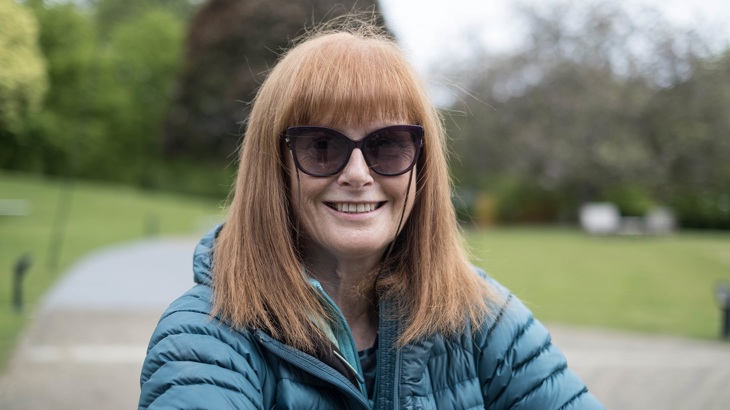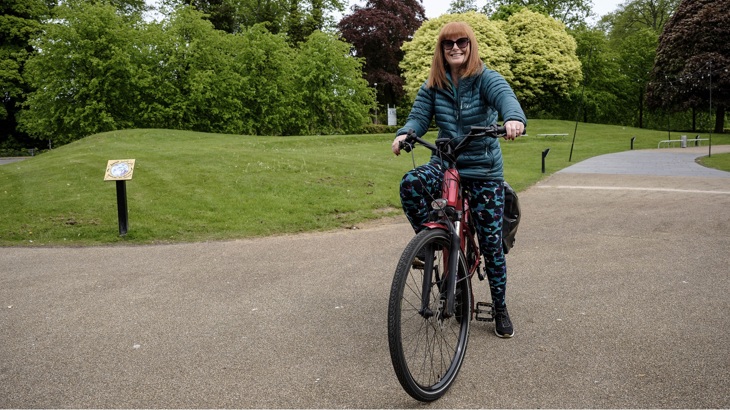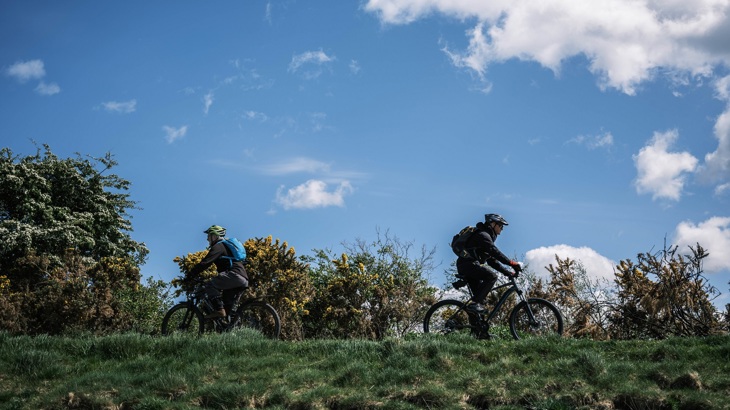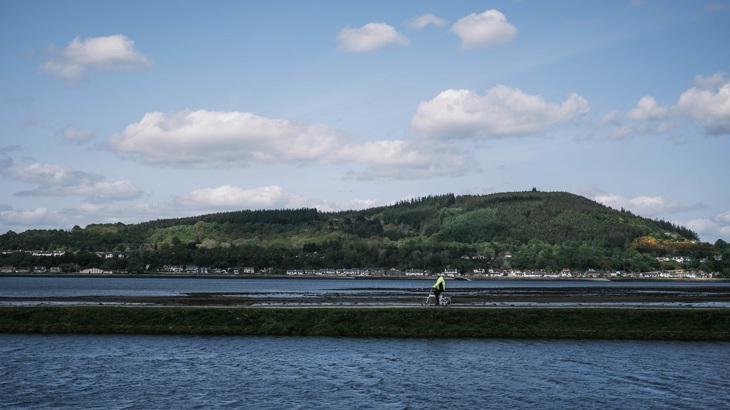After being told that a visual impairment meant she would never drive again, Judith quickly found a way to retain her independence. As the third Walking and Cycling Index for Inverness reveals what progress has been made towards making walking, wheeling and cycling in the city, highland capital resident Judith reveals what it’s like to use an e-bike as a main form of transport.
What is the Walking and Cycling Index?
The Walking and Cycling Index is the biggest assessment of walking, wheeling and cycling in urban areas in the UK and Ireland. In Inverness, the Index is delivered by Sustrans in partnership with the Highland Council, and funded by Transport Scotland.
The data in the report comes from 2023 and includes local walking, wheeling and cycling data, modelling and an independent survey of 1,076 residents aged 16 or over in the city.
The Index found that, in Inverness, 49% of residents walk or wheel five days a week, and that 27% of residents cycle at least once a week.
Overall in the city, the number of people cycling has increased since the last Index report, in 2021. And in terms of funding, 50% of residents would like to see more government spending in the area on cycling.
In this blog, to mark publication of the Index for Inverness, resident Judith shares her experience of using an e-bike as a main form of transport in the city.

Judith shared her experiences to help mark publication of the Walking and Cycling Index for Inverness. Credit: Brian Sweeney/Sustrans
Taking independence into my own hands
I first started cycling seriously because I was told that as a result of a visual difficulty I wasn’t fit to drive. I was absolutely gutted, it felt like I’d lost a bit of myself. So, the next day, I took matters into my own hands, and I went and bought an e-bike there and then. I needed my independence; I needed to feel that I could still get myself to where I wanted to go when I wanted to go, and not be reliant on other people.
I cycle every day, if it’s not snowing or icy. I am out in all weathers. I checked my odometer recently and I’ve done 6,600 miles. Basically, it is my way of getting about Inverness. I'll go out in the morning and not go home until I have to, dotting about everywhere. Until recently, my mum was living at home with carers but I was required to be there as well most days. So, I would cycle the five-mile journey to hers. I got panniers on my bike so that I could do the shopping as well. The bike is my transport.
I think now I've got used to life without a car. It's taken quite a long time to get to this point but now I'm just embracing the cycling life!
Cycling gives me freedom but I also feel that I'm a lot fitter for doing it every day. I have always exercised, and I have had bikes in the past, but I haven't used bikes to this extent and I do feel fitter. It is also helping my mental health. I get a buzz out of cycling. When it's beautiful weather and you're cycling and I think, "Oh, there's nothing better than being on my bike. Look at all these people stuck in their cars overheating!”

The e-bike is Judith's way of getting around Inverness. Credit: Brian Sweeney/Sustrans
An advocate for the e-bike trend
I am an advocate for e-bikes because I feel that people who maybe are not that keen on cycling, maybe are a bit scared, feel that their physical fitness isn’t as good as it could be, it’s so easy for them. I personally go out on my bike all day. I don’t have to think about, “am I going to be too tired to get home”.
If I am, I just ramp up the battery a wee bit. I try not to, I try to keep the battery at a good level, you know, a low level, but you've got that option. And I just think people don't actually appreciate how good being on an e-bike can be because it does make life very easy. When I come to a hill, I feel like Mary Poppins, I just glide up the hill whereas I see other people peching their way up, trying to get their gears as high as possible. So, for me, an e-bike makes life a lot easier.
Pros and cons of cycling in Inverness
Inverness is a fairly cycle friendly city. There are a lot of shared paths which are great, so you're not on the road as much, but you’re then up against sharing with pedestrians who don't always appreciate a bike on their path. I always ring my bell as a matter of courtesy when I come up behind them, just to let them know I’m coming. But a lot of people take that as “get out of my way”. And it’s not. I think there just needs to be a wee bit more education around shared paths in Inverness.

Overall the number of people cycling has increased in Inverness since the last Index report in 2021. Credit: Brian Sweeney/Sustrans
It would be great if we could have well-signposted designated cycle paths, not part of the road, and not just a shared pavement. I cycled abroad and they had that, and it was so much easier, so much safer, and I just felt so much more confident there.
That would make it very cycle friendly. Because at the moment, cycling paths are either shared paths, or a bit at the side of the road where the drains are, where potholes appear. My main difficulty is poor road surfaces. Because of my vision I don’t always see the potholes coming, or if there’s traffic beside you, you can’t move out to avoid the potholes. And I’ve had quite a lot of punctures on my bike. And unfortunately, because of my visual difficulties, it’s detail I can’t see, so I can’t fix them myself. I luckily have people that I can call on to do that for me, but I would love to be able to not have that issue or be able to sort it myself, I can’t.
So, it’s not the easiest city to get around, but I think there are improvements and things are happening to make it more cycle friendly. I was at a focus group concerning the Raigmore Interchange, which is a major roundabout in Inverness. It’s my quickest route into town, but I will not go that way at all because it is very frightening trying to get across part of the road. There is a pedestrian crossing in the second half but the first half you cannot see traffic. But they are planning to make a pedestrian and cycle crossing. That will make such a difference for the journey into town.
Experience with the Visually Impaired Tandem Club
Last year I joined a club. I hadn’t even been aware of it, but I was introduced to the Visually Impaired Tandem Club in Inverness. And oh my goodness what a wonderful group of people. It's a social outing, but it also lets me relax a little bit because obviously I'm not allowed to be on the front because of my visual difficulties. Those at the front are called the pilots and then the people on the back are called the VIPs! It stands for visually impaired people, but I prefer just to say VIP!
We head out on Wednesday evenings and just dot about Inverness. I'm lucky because I can cycle on my own but the vision of some of the people who attend the tandem club is too poor for them to cycle on their own any more. It's very inclusive, there are people with varying visual issues, and anyone can do it. What is lovely about the club is that it lets people have that feeling of cycling again. It is a wonderful thing again for everyone's mental health.
The Tandem Club started about 40 years ago, and there are still some of those original members attending the club which speaks for itself. If you know people are prepared to do something for that long then it must be doing some good.
What I love in particular about the Tandem Club is the social aspect. I am with people who have got similar issues to mine, so I don’t feel so alone in what I’m going through. But also, it's hard work because I'm used to cycling on my e-bike and you do, even if you're on the back, have to pedal because the pilot on the front is aware if you stop pedaling. It's lovely that people who can't cycle on their own get to experience it again because cycling is such a joy.

The Walking and Cycling Index reveals what progress has been made towards making walking, wheeling and cycling in Inverness. Credit: Brian Sweeney/Sustrans





